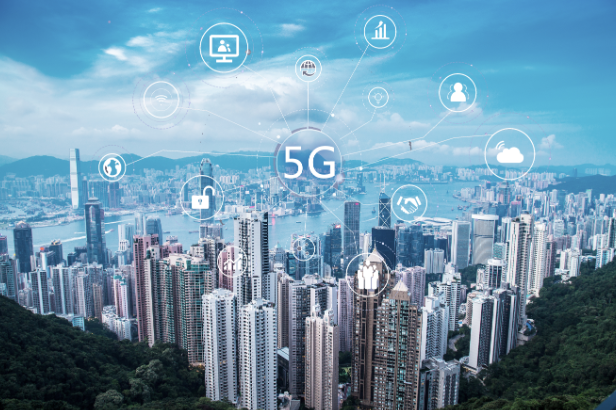Transforming the digital experience with 5G

Transforming the digital experience with 5G

Transforming digital experiences, products, services, operations, business processes and technologies to enable digital-first and omni-channel customer experiences has become a top priority for communications service providers (CSPs) and a top priority for transformation goals.
However, 5G is taking digital experience to the next level and opening up massive opportunities for CSPs to offer customers a variety of services for digital interactions. In fact, 5G revolutionizes the customer experience, allowing digital access to all services that were only dreamed of in the past and opening up new avenues for digital service provider (DSP) and CSP partnerships.
This article examines the impact of 5G on digital experiences and the potential for further transformation.
High-speed connection + low latency = seamless real-time interaction
High-speed connections combined with 5G’s low latency ensure faster downloads and less delays in data processing.
This enables better streaming experiences, smoother real-time interactions, seamless gaming, and immersive collaboration for a personalized experience. With increased bandwidth, content creators can provide high-quality, immersive content for different types of video streams such as 8K, augmented reality applications, virtual reality games, etc., thereby transforming the digital experience.
5G enhanced mobile broadband allows more users to connect simultaneously without affecting service speed or quality, such as at sports or concert stadiums or venues, shopping malls or cinemas.
It also means that, thanks to blazing-fast speeds and increased capacity, high-quality video streaming, augmented reality (AR), and virtual reality (VR) — all features that enhance connectivity, especially with today’s smartphones — are possible .
This enables digital experiences that were hitherto impossible in other generations of connectivity. It also expands the realm of possibilities into new areas, such as virtual stores that use augmented reality to see what products will look like in real time.
5G also enables edge computing, enabling faster data processing and allowing latency-sensitive tasks to be performed closer to the user, completely transforming the digital experience.
Data stored in the cloud can be combined with data at the edge to provide real-time information. This can enhance the experience, such as providing details on where to shop while using artificial intelligence and real-time data to check individual dietary restrictions based on their preferences.
IoT enables connected homes, cities, vehicles and industrial automation
Massive Machine Type Communications (MMTC) provides connectivity for large numbers of devices that transmit small amounts of traffic intermittently, allowing approximately 1 million connected smart devices and sensors per square kilometer without overloading the network.
The low latency and high capacity that 5G provides through this core capability will be critical to enabling the Internet of Things (IoT) as it allows large numbers of devices to communicate with each other in real time, enabling smart homes, smart cities, and industrial automation through faster data transmission. and connected vehicles create opportunities.
This will provide consumers and businesses with better experiences as the transformation of digital experiences accelerates in homes and industries.
From a customer support perspective, it can improve home troubleshooting and independently detect problems or alert users to maintenance before they occur. Sensors can guide customers through troubleshooting and raise the bar on the overall customer experience.
Enhance reliability of mission-critical applications
Ultra-Reliable Low Latency Communications (URLLC) provides enhanced reliability and availability, making it suitable for mission-critical applications in industries such as fleet management, healthcare or public safety.
5G is transforming digital experiences through its potential to enable digital traffic management, autonomous vehicles, telemedicine and teleradiology, remote surgery, and more.
Since most use cases impact humans, critical communications must not be compromised. Therefore, using 5G can improve security and efficiency.
How 5G will transform digital experiences through network slicing
5G allows network slicing, allowing CSPs to divide the network into multiple virtual networks with different attributes. This makes it possible to allocate dedicated network slices to specific services while ensuring that the quality of service for different applications is guaranteed.
For example, network slices can be dedicated to gaming or sports experiences to guarantee high capacity and speed when playing games or watching matches. This means customers can control how they subscribe to products and bundles, allowing for unique configurations for differentiated digital experiences and creating the option to pay more for the experience they want.
Bringing CSPs and digital partners together
With the advent of 5G, the pairing of communications service providers and digital partners has taken another big step forward. Communications service providers can now enter into a variety of digital service partnerships, particularly in gaming, education, entertainment, travel, healthcare or sports, to provide customers with engaging interactive experiences through a one-stop shop.
There is a huge opportunity for users to subscribe to these different types of digital experiences from one marketplace and have microapps experience all the services in the same marketplace.
Collaborations with OTT providers, content creators and other industry players provide a comprehensive range of digital service experiences to deliver bundled digital services with connectivity.
Transform digital experiences with 5G, enabling new use cases and business models
5G transforms the digital experience by delivering faster speeds, lower latency, massive connectivity and enhanced reliability. It also opens up new possibilities for IoT applications, immersive experiences, real-time communications and personalized services across industries.
Improvements in reliability, performance and efficiency will be a huge challenge for businesses that must meet higher customer expectations. As 5G continues to be rolled out globally, you can expect significant advancements in digital experiences and innovative use cases leveraging the power of this technology.
Overall, 5G brings more than just technological advancement; it enables industries to develop new use cases and business models with further adoption by CSPs, DSPs and customers.